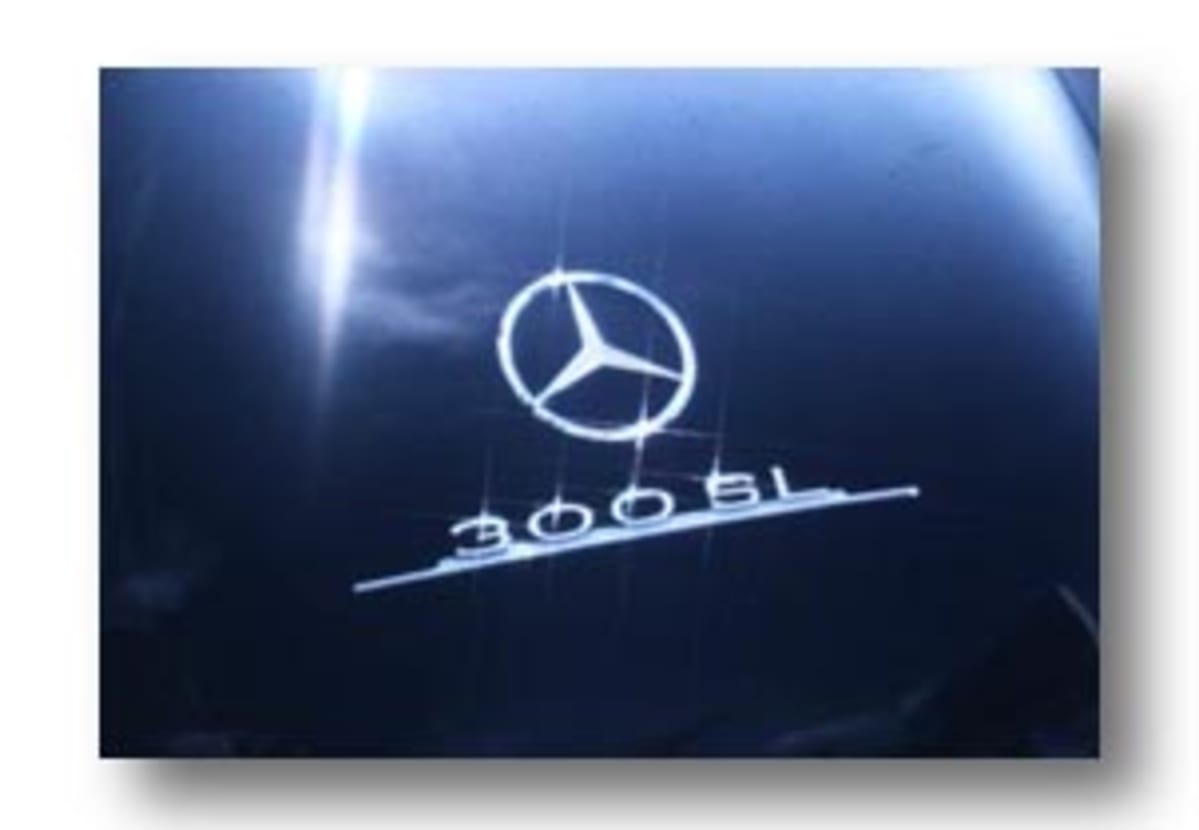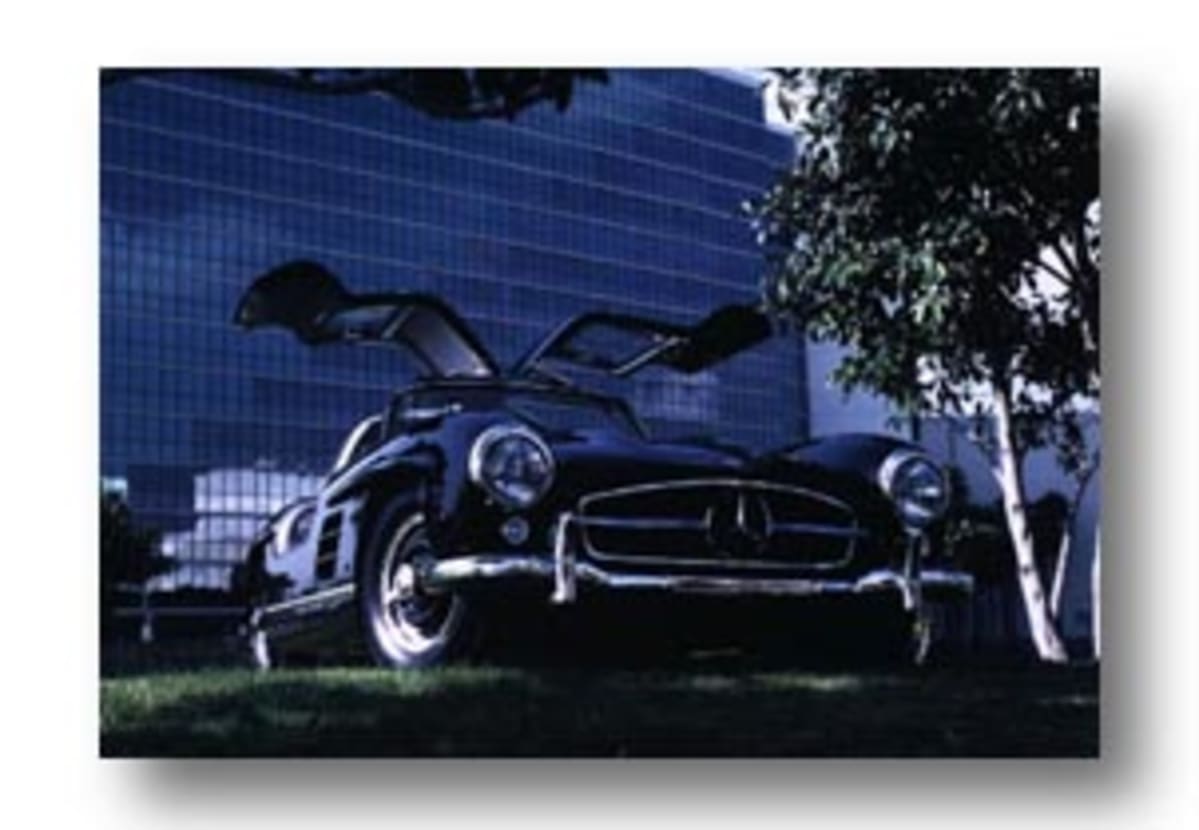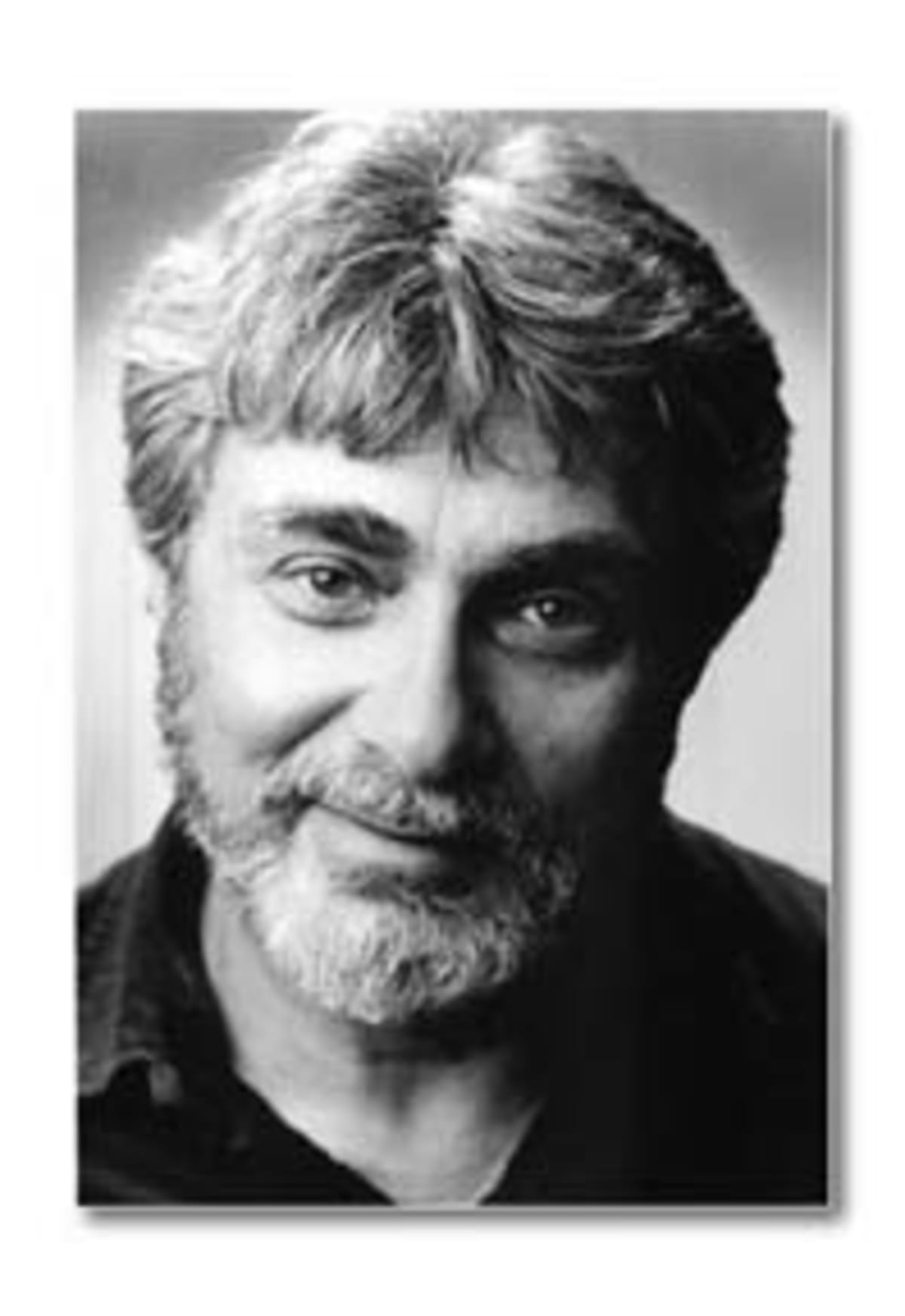The Gull-Winged Monument
Published on Wed, Feb 28, 1996
By: Len Frank
Len Frank on the classic 1954 Mercedes-Benz 300SL “Gull-Wing”


The real landmark cars of the Motor Age have, for the most part, been mass-produced economy cars—the Ford T, the VW, Fiat Topolino, Citroen 2CV, Austin/Morris Mini. They represented unique solutions to complex problems and have provided the impetus to the infrastructure that allowed any real automobiles at all to be developed.
The cars that get the attention, though, are the monuments, virtual dream machines that really had little impact on automotive technology or anything else—except in our hearts, in our yearnings, our goals, desires. Once perhaps, a Rolls-Royce or Daimler, a Napier, had a level of quality, reliability, comfort and performance that was simply not available in lesser motorcars.
But as time progressed, the mass-produced car matured and the mantle passed to it—except for those extreme cases like the Mercedes-Benz SSK, a few supercharged Alfa-Romeos, a tiny handful of Bugattis. A Cadillac V16 or Packard V12, though it might cost as much as six or eight Fords or Chevrolets, cost nothing like the stratospheric sums charged for its European counterparts, and in most every way performed better, more reliably, more silently. Consider that the best performing production car in the world (even setting production levels as low as 500 units in a year), prior to World War II, was a Buick.
Mercedes, both pre- and post-Benz was no exception to the general scheme.They built a few exceptional grosser automobiles and a great ruck of beautifully executed but mundane machines, all snapped up by the rich sausage makers, brewery owners, and provincial bankers who have been forgotten along with their cars.
The exceptional SS-series cars were brutish, could not fail to impress, but garnered only superficial emulation. They were horribly expensive and difficult to maintain, and without that maintenance, just plain horrible.
When the Mercedes Grand Prix cars began the domination of the racing circus with their technical blitz (as well as blitzen performance), the enthusiast world waited in vain for some transfer of the technology to the road-going cars. Their reward was the 380/500/540K-series, whose gross engineering and specification resembled nothing so much as the contemporary Buick. To be sure, their execution was, as usual, without parallel; at its best, the looks are still influencing those who confuse style and fad. If there were any real logic to it, I would wonder why the prices for these machines now bump the seven figure level.
With this as a background then, consider the miracle of the Mercedes-Benz 300SL. When the war ended for Germany in May, 1945, the Mercedes plants, producers of trucks, staff cars, armored carriers, tanks, aircraft and marine engines (indeed, the Mercedes three-pointed star indicated the use of Daimler engines on land, in sea and air), had, along with the ball bearing plants, refineries, steel mills, machine tool makers, been bombed, burned, and looted into ineffectual shells.
Thanks to the Marshall plan, and the tendency the Germans have, when not restrained, to remain in productive motion, Mercedes began to overhaul pre-war cars just a few months after the war ended. They produced their first postwar car almost a year to the day after V.E. day. Predictably, it was one of the uninspired pre-war designs, one of the 170-series, with all of the panache’ of a 1935 Chevrolet (and less engineering finesse).By the end of 1946, 214 had been built. By the end of 1947, it was over a thousand.
In 1951, the six cylinder 300 (and more modern 220) were introduced putting Mercedes back into the luxury car business. By barter, by repairing U.S. Army trucks, by restoring their own pre-war cars, by carrying rubble by hand, until they could afford one wheelbarrow, then two, Daimler-Benz re-established themselves among the world’s automakers.
Racing, for Mercedes-Benz, had really been a means of publicity—never mind the old truism about “improving the breed”. That doesn’t even work with the horses from whence the saying came, unless ever faster, ever more limited and ever more fragile horses—or cars—are the desired result.Still, the nucleus of the pre-war racing department was there as anxious as ever to be doing what they did so well.
There was an initial flirtation with the racing of the pre-war Grand Prix cars. There was not time (or resources?) to build proper modern GP cars before the formula was to end, so the decision was made to build a quick-and-dirty sports car using whatever was possible from the production lineup. Enter the 300SL. The automotive world–not the same thing as the real world, to be sure—paused to look, wonder, and ultimately admire. Worship came later.
The 300-series Mercedes-Benz, with its heavy, massive, cruciform frame, its heavy, rust-prone, thirties-style body, its strong, but again, heavy, three-liter (hence 300) single overhead camshaft engine, its ponderous, unstable, high roll-center swing axle rear suspension (double A-arms front, coil springs all around), was a genuinely unlikely place to start building a sports car.
Remember that this was the era of the quickly maturing Ferrari V12s,the XK120C Jaguar, the 5.6 liter Cunninghams. The 300SL (SL for Sport Licht) that was rather hastily cobbled up from that unlikely beginning. It was in November, 1951 and shown to the world about four months later.

What was shown was the most revolutionary car Daimler-Benz had yet built for racing. They had no thought, at that time, of turning it into an even more revolutionary production car. The basic engine and transmission from the sedan were used, with the big, heavy six laid over at an angle and dry-sumped. By the usual hot rod methods, power was increased from the sedan’s 115 to 170. The first racing versions used three Solex carburetors. Bosch and Mercedes later introduced the wonderful, expensive, exceptionally precise direct mechanical fuel injection. Instead of introducing fuel into the port or manifold, the very high pressure spray was injected directly into the combustion chamber at the precise moment of ignition. It compensated for altitude and humidity and gave superb throttle response under all conditions. It increased horsepower. It increased gas mileage. With the exception of a few of the luxurious 300S Mercedes, the 300SL was the only production car so equipped.
The body was supposed to have a drag coefficient of 0.25—a bit hard to believe, but certainly the lie couldn’t have been too extreme. Today’s best production car is about 0.29.
The single item that set the 300SL apart, though, were those doors. No one had ever seen doors like those before. The whole mystique of the car (for the hoi polloi at least) is tied up in the gull-wing doors.
The doors were made necessary by the frame the Mercedes engineers used to replace the sedan’s ironmongery. It was a lace of small diameter tubes welded and bolted together into a series of trusses to make a frame of unprecedented rigidity. This, in turn, allowed the suspension to be tuned to its (limited)ultimate. To get the necessary rigidity through the mid-section of the car with conventionally cut doors would have been an impossibility with the technology of the time, ergo, gull-wing doors.
The 300SL did not win its first race (it was second) but it did win most everything after that. It was so good that it panicked Jaguar and Ferrari into making tactical mistakes that cost them dearly.
Hardware aside, the 300SL is properly a story of people. Rudolph Ulenhaut, of course, who combined engineering ability with administrative prowess and the balance and skills of a racing driver. Having an engineer who could evaluate problems and solutions with the seat of his pants and his own two hands went a long way toward making up for the lack of time, cash, and research facilities that plagued Daimler-Benz at that time.
Max Hoffman was an Austrian who set up shop in New York and began to sell an unlikely combination of automobiles that he imported—sometimes by hook, most often by crook. At one time or another, between the late `forties and the early ‘seventies, Max was responsible for Porsche, BMW, Jaguar, VW, Lancia, Alfa-Romeo, Talbot, Delahaye, Delage, and, among others, Mercedes-Benz on these shores.
When Mercedes built their handful of 300SL racers, their aim was publicity. It was Hoffman who convinced them to turn it into a production car by guaranteeing that he would buy all of the initial production. He was also responsible for the 190SL, laying out the specifications for the car. Further, he told Mercedes what color their cars should be, what equipment they must have to sell in this market. He liked the tool tray that Jaguar used, and coerced Mercedes into its use in the 300SL. He made the same demand of BMW and it lives on today as one of their hallmarks.
Scott Grundfor is a young man who used to run a body shop in the Los Angeles area. Gradually, consciously, it grew into the restoration shop that it is now. The first time that I personally saw a 300SL was just before the first sports car race that I witnessed in 1956. There were three of them there. Over the years, I have seen one here or there, once I saw a baker’s dozen at a meeting of the Gull-Wing Group, an owner’s club. The first time that I walked into Scott Restorations, there were two dozen 300SLs there—about fifteen coupes, nine of the later roadsters.
Scott is a very quiet fellow, modest. He disputes this:”Maybe twenty-two,” he says. He never set out to restore all of the world’s SLs or even most of them. But as long as things seem to be going that way, he has brought an unusual level of organization and ability—to say nothing of artistry—to what is often a disorganized and haphazard business populated with prima donnas and outright charlatans. Scott actually fabricates in batches those parts Mercedes can no longer supply. He duplicates the factory fitted luggage, remixes the factory colors, stitches the pleated leather, overhauls the mechanicals. Accuracy and Scott’s modesty make me point out that Scott Restoration has a considerable crew of artisans and artists. It would be an impossibility for one man to put in the thousands of hours that a full SL restoration takes—assuming that one man ever has all of the relevant skills—and do it more than a few times in one life.
One medium grey 300SL with polished outer wheel rims but no additional trickery was a particular favorite of Scott’s. It rewarded him by winning best-of-show or first in class in every show in which it was entered. Then it was sold for a price about fifty times greater than the original buyer of the car paid some thirty years ago. Scott says the continual parade of SLs is beginning to worry (and bore) him a little. There were only about thirteen hundred of the coupes ever built, and while there were variations like alloy bodies, competition camshafts, Rudge knockoff wheels, and the later roadster variations, with and without removable hardtops, they are all still 300SLs. His Ferraris win awards too, and he’d like to see a few more in his shop. Still, he seems to have this way with the Gull-Wing monuments.
Top image: 1954 Mercedes-Benz 300 SL “Gull Wing” (WallpaperUp image in the public domain)

The late Len Frank was the legendary co-host of “The Car Show”—the first and longest-running automotive broadcast program on the airwaves. Len was also a highly regarded journalist, having served in editorial roles with Motor Trend, Sports Car Graphic, Popular Mechanics, and a number of other publications. LA Car is proud to once again host “Look Down the Road – The Writings of Len Frank” within its pages. Special thanks to another long-time automotive journalist, Matt Stone, who has been serving as the curator of Len Frank’s archives since his passing in 1996. Now, you’ll be able to view them all in one location under the simple search term “Len Frank”, or just click this link: Look Down The Road. – Roy Nakano




